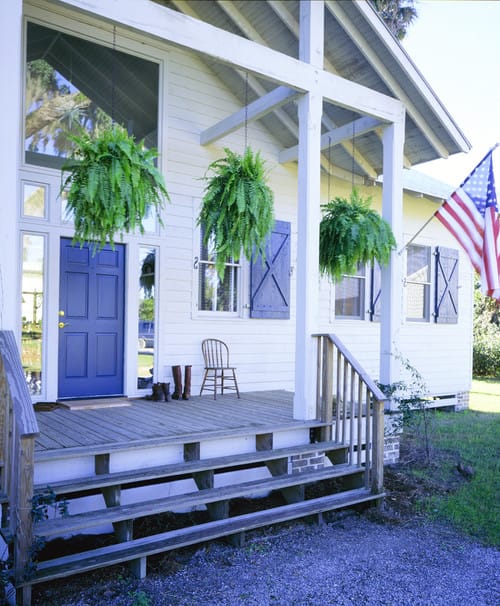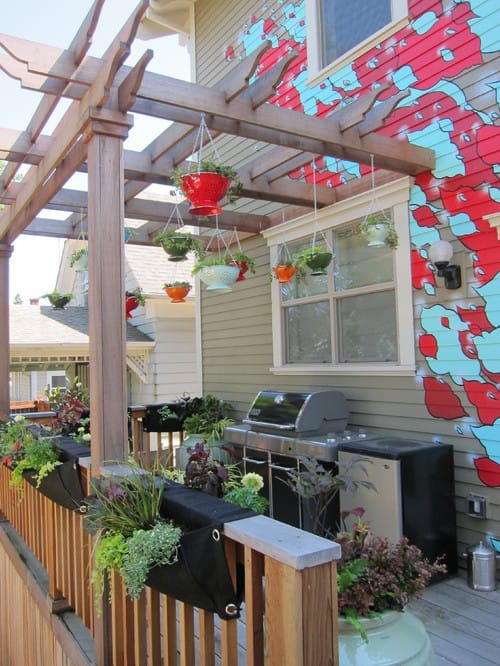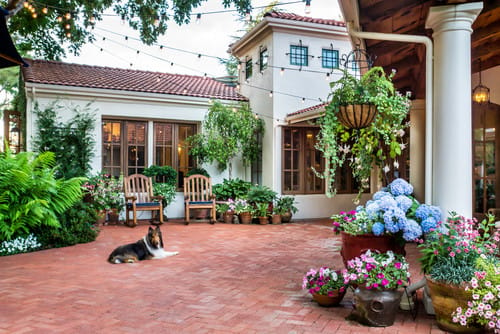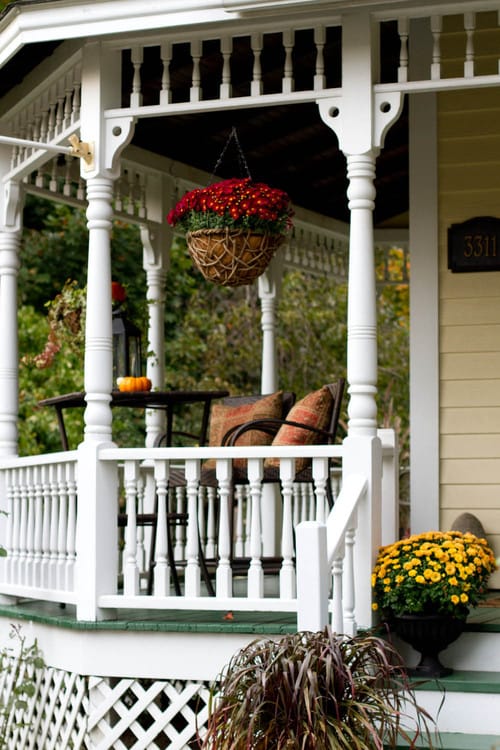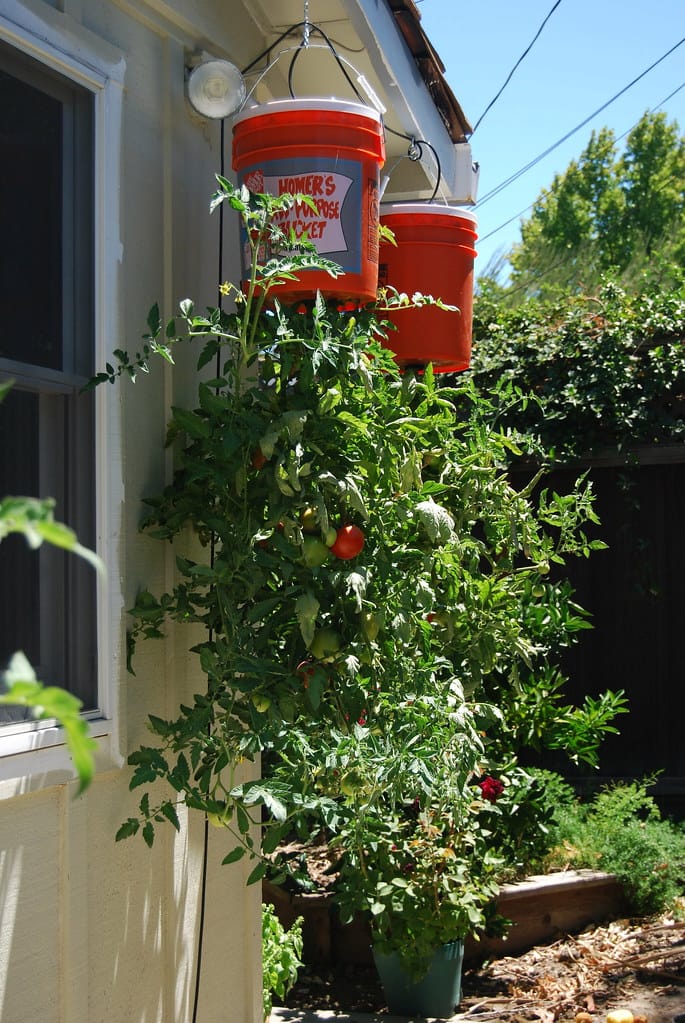Hanging Baskets Guide: How To Design + Hang Baskets In Your Outdoor Living Space
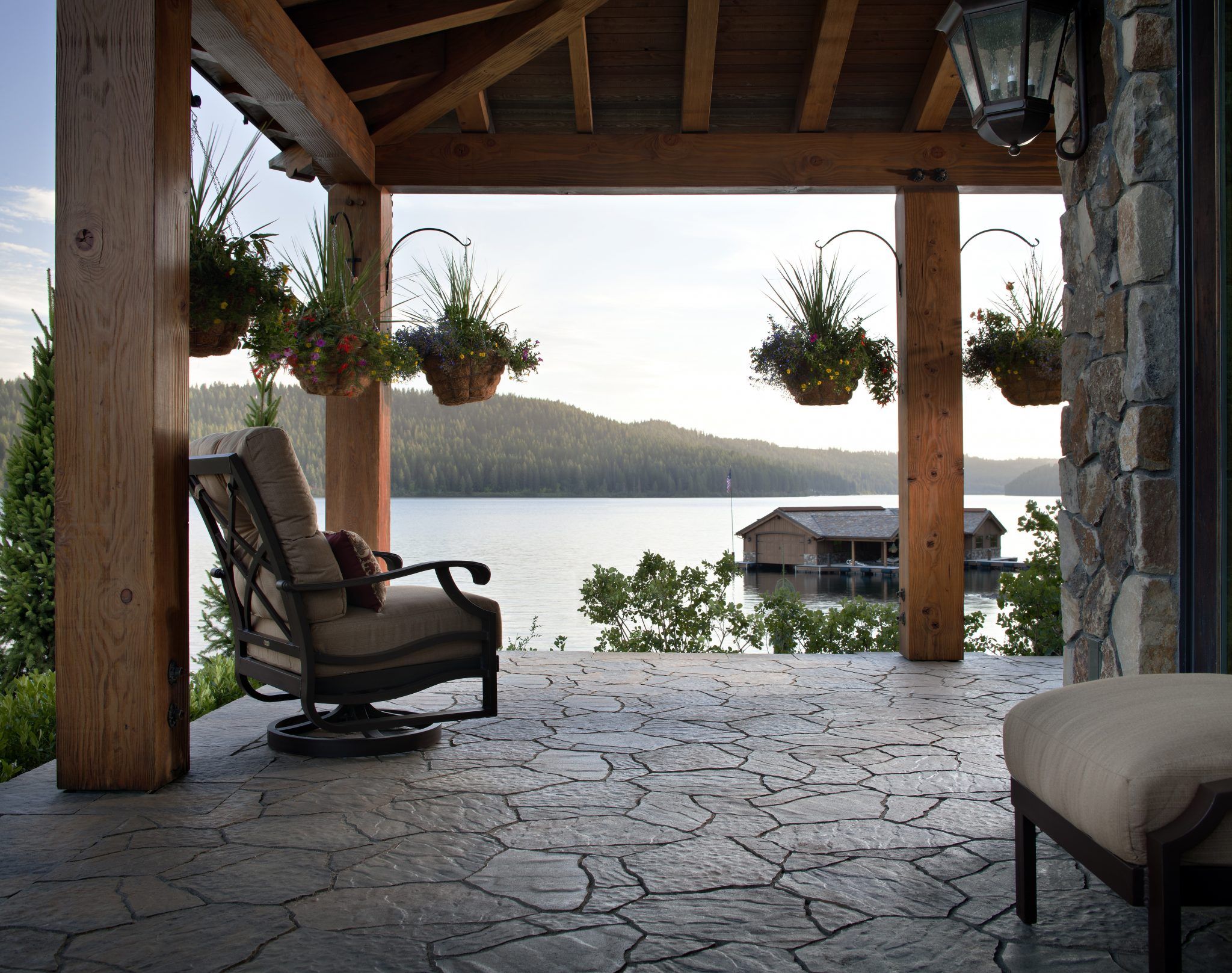
Hanging baskets are ideal garden accents as they add color and interest to otherwise underutilized spaces. When done tastefully, they are also credited with raising curb appeal which can help increase your home’s value. Birds and other pollinators love them and they’re actually even good decor accents for inside the home as well.
What you plant in a hanging basket is based on personal preference and location but we’ll give you the tools to get started.
Plan the Design First
Conceptualizing the look you’d like to achieve in advance helps determine the type of plants to use, the pot, and where to hang it (or vice versa). Do you want a single cascading fern, a ball of succulents or a variety of tropical plants? How big of a space are you looking to fill? Do you have support for a heavy hanging basket?
If the hanging basket will rest above eye level, keep in mind that there is no need to have a tall central plant (contrary to standard container gardens) as most people will not be able to see it. Instead, it’s acceptable for the top of the basket to stay rounded or flat and for the cascading stems and leaves covering the sides of the pot to draw most of the focus.
Once you have an idea of what you’d like the basket to look like, the pot comes next. Note that many retailers sell seasonal blooms in existing hanging pots, an excellent solution for busy gardeners because all you need to do is buy and hang.
Choose a Pot and Liner
Pots for hanging baskets need to start off lightweight as once filled with soil and plants, they can become quite heavy. Unless supports make it doable, stay away from ceramic pots. Not only are they heavy, but having one accidentally shatter on hardscape or meet the head of a guest is far from ideal.
Lightweight metal and plastic can certainly work (as can clever containers like the strainers pictured above) but the most common containers are wire or woven baskets with a lightweight liner inserted inside. The reason is that gaps in these frames permit plants to grow out of the sides or even the bottoms of this style of pot, in addition to over the top. This leads to a full and elegant cascading effect that so many gardeners are after.
Be sure to also select a size that provides enough room for the roots of the plants to grow.
Liners become an important decision if using a wire or woven basket. The two most common types of liners are moss and coco-fiber (pictured above). Coco-fiber is by far the most popular though if you intend for plants to hang from the sides of the pot (rather than cascade over the top), you’ll need to cut the liner manually and slip the plants in carefully. Try covering stems in paper to avoid damage to leaves and stems as from the coarse fibers as the root ball is inserted. Sphagnum moss liners tend to look better when planted with more tropical plants as it has a looser texture.
Both materials are porous and allow the wind to penetrate which dries out the pot. So, what many gardeners do is add a plastic liner on top of the natural liner before placing the soil and plants inside to slow down evaporation. It could be something as simple as a garbage bag held in place with a little bit of gravel or a waterproof liner specifically made for the basket. You could simply line the bottom of the liner or the entire thing.
Make sure that the potting soil is light such as those made mostly out of peat or perlite (or both). Light soils also typically provide enough air space for growing roots. Consider adding water absorbing crystals that do exactly as their name implies. Their ability to retain water cuts down on the amount of manual watering you’ll have to do.
How to Maintain Hanging Baskets
The most critical aspect of hanging basket care is to water correctly and in sunny Southern California this is likely going to be multiple times per week. When you do water, make sure it soaks the basket. Wait for some to drain out the bottom as proof that the soil is wet. But if water starts to empty out of the bottom the second you start watering, it could be a sign that the soil is too dry (it shrinks and creates a gap between it and the pot) in which case a good soak will be needed to break it up. If the hanging basket planting is dense, take care not to soak too many leaves as not to welcome rot and other diseases.
It’s also wise to rotate hanging baskets so that all sides receive an equal amount of sunlight.
Hanging baskets need a slow-release fertilizer added at the time of planting (if the mix used doesn’t already have it) and supplementation thereafter depending on the type used and its anticipated duration.
Deadhead flowers if necessary to keep plants in full bloom.
Growing Vegetables in Hanging Gardens
Vegetables need sunshine to grow so be sure your eaves don’t cast too much of a shadow over the basket. But if expanding an edible garden is the goal, a hanging basket can certainly do that. Look for dwarf tomatoes, like cherry or grape, as well as strawberries, peas and some types of peppers. Lettuce can tolerate lower levels of light so they are good choices for partial shade. I’ve seen colorful lettuce plants mixed in with standard flowers, however, make sure to use fertilizers, soil and pest control that is safe to eat on the entire basket. Herbs also make fantastic looking hanging baskets.
Tomatoes, in particular, grow well in upside-down hanging planters where plants grow out of the bottom of the planter. This method succeeds because gravity keeps the stems from bending which can cut off nutrients and moisture to stem ends.
Your Turn…
What types of plants do you grow in hanging baskets?
